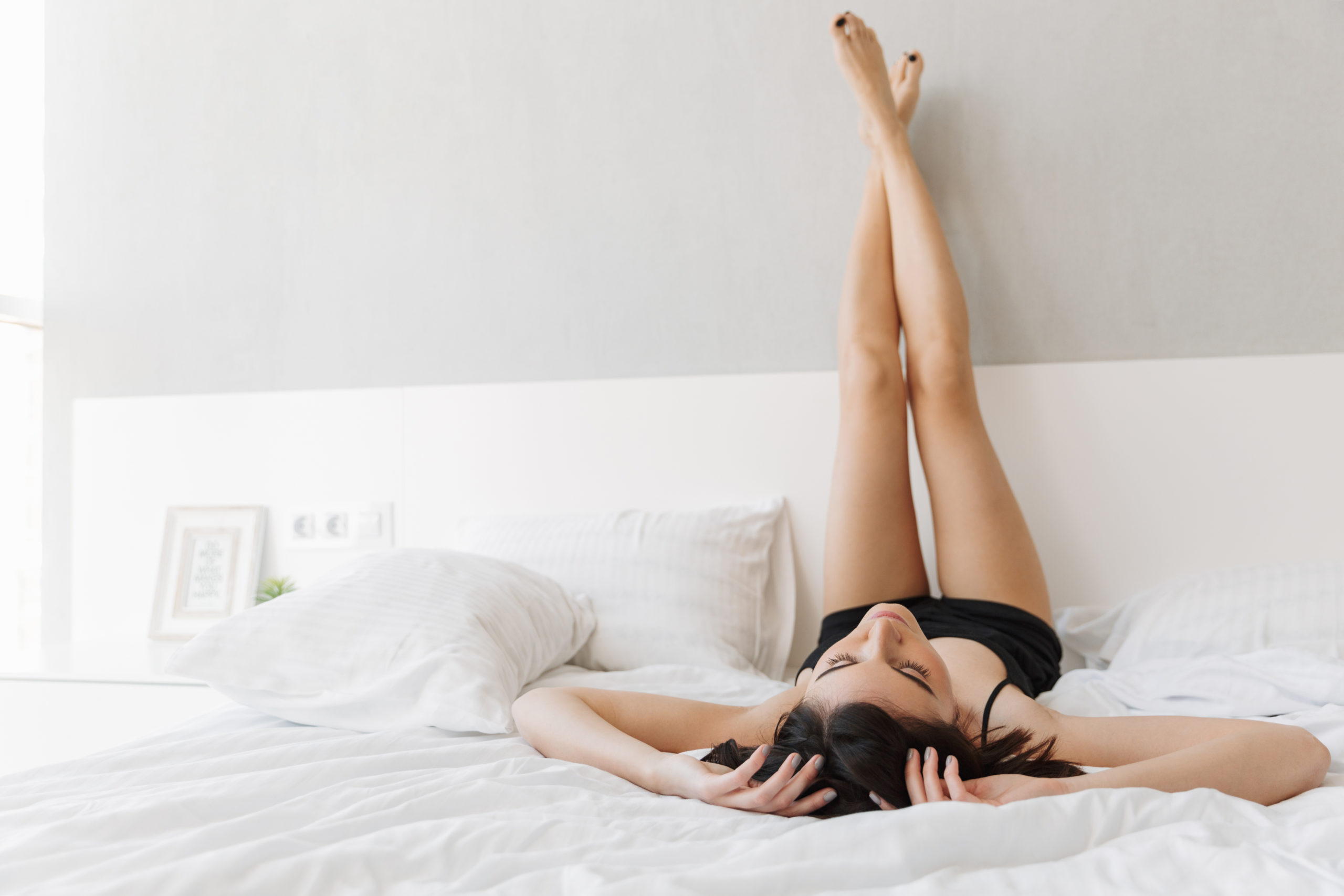Beauty...

By Hilary Sheinbaum
Unless you deleted your social media apps within the past couple of weeks (ok, maybe months), you’ve likely noticed that influential women of the Internet (Tinx, Melissa Wood, etc.) are propping their feet up against walls and while laying on their beds — or floors — or wherever …and uploading photos of their face up/feet upsidedown-ish positioning (more on that soon). Informally called “legs up the wall”, it’s also known as Viparita Karani (just in case you want to impress your friends with that tidbit of knowledge).
Although this move has been amplified via photo and video sharing platforms, the trend definitely didn’t originate on Instagram or Tik Tok (it’s a yoga move). What is clear though: the 45 to 90 degree leg-to-core angle arrangement has found it’s fan base and it’s picking up more participants day by day. (We don’t blame people for trying and sticking to it — it feels good!)
We weren’t going to take this investigative assignment (figuratively) lying down… so we phoned our yogi friends to explain how to do this legs-up-the-wall stance correctly, pick their brains on how long to do it for, and find out what benefits could possibly come of such a care-free pose (among other things). Prop your feet up and take a read to find out!
A: “Viparita Karani is also known as ‘legs up the wall.’ There are a few ways to do it,” says Alana Weinroth, 200 hr RYT and founder of Give A Damn Yoga in Los Angeles.
Heidi Kristoffer, a Yoga Expert, E-RYT YA, and Founder of CrossFlow Yoga in New York explains one easy way. She suggests getting into the position by sitting sideways next to a wall, with the wall on your left. Lie down on your right side, facing away from the wall with your bum touching it. Using your arms, lift your legs up the wall as you roll over to the left onto your back. Allow your arms to relax down on either side of you. Palms can face up for openness or down for an extra level of grounding, she says.
A: “Like many yoga poses, Viparita Karani is very relaxing,” says Wineroth. “It calms your nervous system and thus helps alleviate stress and anxiety. It helps to increase circulation and therefore can help reduce tension and fatigue in your legs or feet as well.”
A: “I have my clients do this every day — 5 to 7 times a week, for 5 to 20 minutes,” says Kristoffer. “Always do what you can, and work your way up.”
A: Pregnant women, women who are menstruating, or anyone who has glaucoma or high blood pressure should opt out, says Weinroth. (Kristoffer agrees and recommends speaking with your doctor before adopting this ritual.)
A: “It’s important not to hyper extend one’s knees in this pose, so anyone practicing this should make sure to leave a slight bend in the knees,” Kristoffer says. She adds, “I like to put a lavender filled eye pillow on my eyes and do a meditation to really up the relaxation benefits while I’m in this one!”